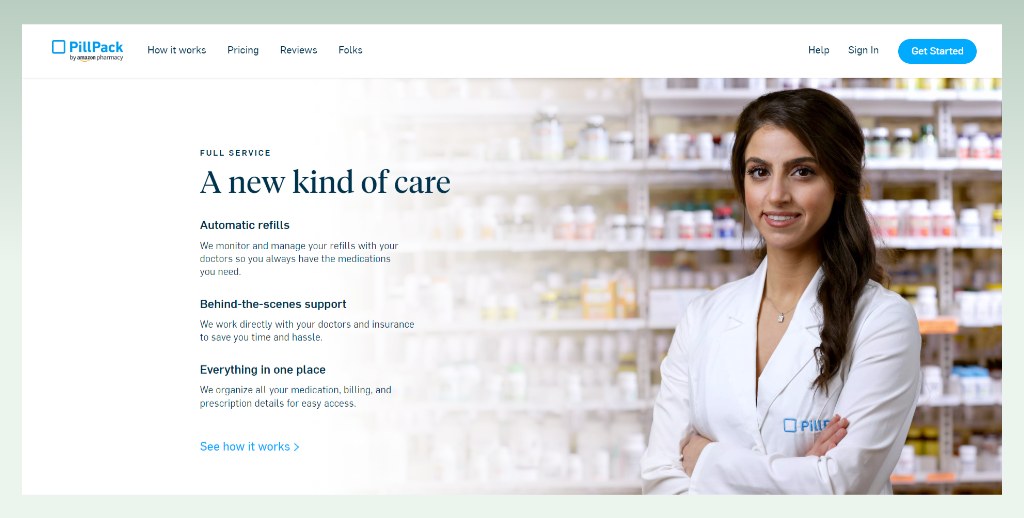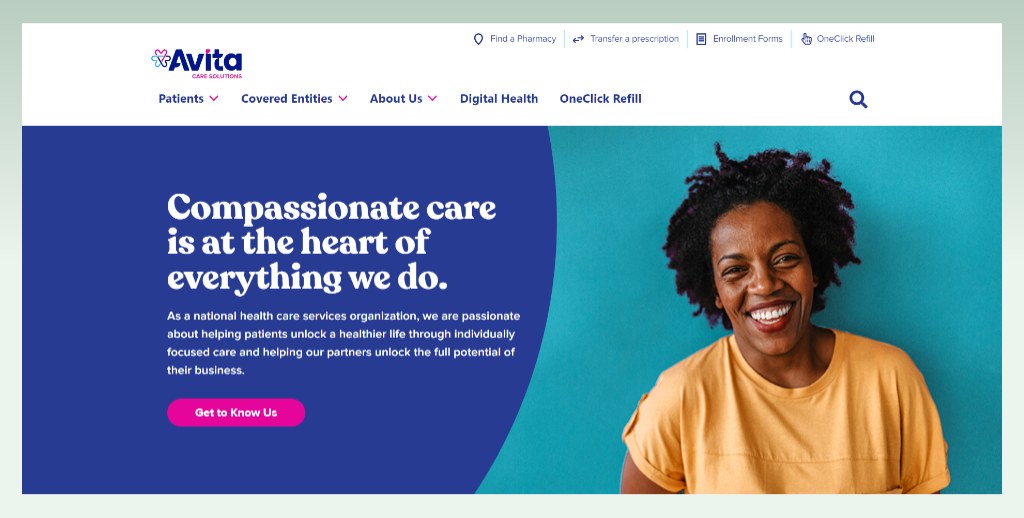How to Start a Pharmacy Business [2024 Guide]

Although pharmacy is one of the most promising and lucrative industries, overcoming the complexities and nuances of launching a successful pharmacy has never been easy. But don’t worry! In this guide, we will walk you through a step-by-step guide on how to start a pharmacy business.
Plus, we’ll also show you some real-life examples of pharmaceutical businesses that have succeeded for your learning and inspiration.
1. How to open your own pharmacy business? (step-by-step guide)
Launching a pharmacy business isn’t an easy task. But it’s not impossible. As long as you follow our detailed guide on how to start a pharmaceutical company, you should be doing fine!
1.1. Step 1: Do market research

Any proper example of a pharmacy business plan begins with thorough market research. This foundational step is crucial to understand the industry landscape, identify your target market, and gauge the competition. It’s not just about knowing the demand for pharmaceutical products but also understanding the specific needs and preferences of your potential customers.
- Target audience research
Start by analyzing the local healthcare environment. What are the prevailing health issues in your area? Are there specific medications or health products in higher demand? Investigate the demographic data of your target region – age groups, income levels, and health trends can greatly influence your product offerings.
For instance, a locality with an older population might require more prescription medications, whereas a younger demographic could lean towards wellness and over-the-counter products.
- Competition research
Also, assess your competition. Visit other pharmacies, note their strengths and weaknesses, and identify any service gaps you could fill. This could be specialized services like compounding, home deliveries, or a more extensive range of natural health products.
- Technology research
Finally, consider technological trends. E-commerce integration and online prescription management are becoming increasingly important in the pharmacy sector. Can you offer your potential customers a unique online experience or a more efficient digital service?
1.2. Step 2: Choose your business model
After understanding your market, the next pivotal step is selecting the right business model for your pharmacy. This decision shapes your operational structure, revenue streams, and customer interaction, making it essential for your pharmacy’s success.
Here are some common pharmacy business models and who would be suitable for which model:
- Community pharmacy: Ideal for entrepreneurs aiming to provide personalized care. These pharmacies focus on local populations, offering medication, health advice, and sometimes additional services like blood pressure monitoring.
- Specialty pharmacy: Suitable for those interested in providing high-cost, complex therapies for chronic conditions such as cancer or rheumatoid arthritis. These pharmacies often coordinate with healthcare providers for patient care.
- Compounding pharmacy: Best for pharmacists skilled in creating customized medications. This model is essential for patients with specific needs that off-the-shelf medications can’t meet.
- Mail-order pharmacy: For those focusing on convenience and lower costs. This model is growing in popularity, especially for chronic condition medications, and can be integrated with eCommerce platforms.
- Hospital pharmacy: Ideal if you’re interested in a more clinical setting, providing medications and consultations within a hospital.
👀 Still don’t know which model to go with? Check out our list of 10 innovative ideas for pharmacy business.
1.3. Step 3: Name your pharmacy business

Now that you have decided on which business model to go with, let’s finish another important task– giving your pharmacy business a name.
Though there are no fixed rules, here’s what you should keep in mind when brainstorming your pharmacy business name ideas:
- Reflect your brand: If your pharmacy specializes in natural and organic health products, a name like “GreenLeaf Wellness Pharmacy” or “Nature’s Cure Pharmacy” would be fitting.
- Be memorable and easy to pronounce: Opt for names that are short, catchy, and easy to pronounce, so your brand name is more likely to stick in a customer’s top of mind.
- Check for trademarks and domain availability: Before settling on a name, make sure it’s not already in use. For instance, if you choose “VitaPharm,” you should check that VitaPharm.com or a similar domain is available and that no existing trademarks prevent its use.
- Consider locality: If you’re opening a pharmacy in Brooklyn, a name like “Brooklyn Care Pharmacy” or “Park Slope Rx” can resonate with local customers, emphasizing your community connection.
1.4. Step 4: Plan your budget

Don’t come up with a big idea just to let it slip away because your budget doesn’t cope with your ambition. Hence, instead of planning everything and planning the budget at the end– you should do the other way round– do careful budget planning at the early stages.
Here is a table summarizing the overall cost of starting a pharmacy business:
| Common types of costs | Estimations |
| Renting | Depending on location, size, and condition, leasing a space could cost between $1,500 to $8,000 per month |
| Utilities and maintenance | Monthly costs can range from $500 to $2,000, depending on the size of your premises and local rates |
| Staff salaries | For a small pharmacy, payroll might range from $3,000 to $10,000 monthly |
| Inventory | Initial stock purchases might require $20,000 to $100,000, depending on the range and quantity of products |
| Equipment and technology | Essential pharmacy equipment and a robust POS system could cost between $10,000 to $50,000. |
| License and insurance | Expect to spend $1,000 to $5,000 for the necessary permits, licenses, and insurance policies. |
| Marketing campaigns | Initial marketing efforts might need a budget of $1,000 to $5,000 |
1.5. Step 5: Select your pharmacy’s location
If you are wondering how to start a pharmacy business that will survive and thrive in the long run, you need to select a strategic location for your pharmacy shop.
While the renting cost is important, remember to factor in these tips when choosing a location for your pharmacy business:
- Choose a location that aligns with your target market. For instance, a location near retirement communities is ideal if you’re focusing on elderly care.
- Look for a spot that’s easily visible and accessible to the public. High-foot traffic areas near hospitals, clinics, or grocery stores are ideal.
- Avoid areas saturated with pharmacies. Instead, find a location with unmet pharmaceutical needs, offering a competitive edge.
1.6. Step 6: Get your licenses and permits

Unlike other industries that might only require a few licenses (e.g. business licenses), starting a pharmacy business requires more licenses and permits. To avoid legal issues while learning how to run a pharmacy business, ensure you don’t cut corners on obtaining your licenses.
Below are the licenses and permits that you must obtain to operate your pharmacy business legally:
- Pharmacy Business License: This is the primary license allowing you to operate a retail pharmacy business. It’s issued by state authorities and ensures your business adheres to state-specific regulations.
- Pharmacist Professional License: Every operating pharmacy must have a licensed pharmacist in charge. This license is obtained after completing the necessary education and passing a state board examination.
- Controlled Substance Registration: If your pharmacy plans to handle controlled substances, registration with the Drug Enforcement Administration (DEA) is mandatory. This permit ensures the legal handling of such medications.
- Local Permits: Depending on your location, additional permits, such as a health department permit or a signage permit, may be necessary.
1.7. Step 7: Recruit staff

Recruiting staff is the next vital step we’d love to discuss in this pharmacy launch checklist. Your staff not only represents your brand but also ensures efficient service, customer satisfaction, and compliance with health regulations.
From our experience, here are the staff requirements for small, medium, and large pharmacy businesses:
| Staff Role | Small Business | Medium Business | Large Business |
| Pharmacists | 1-2 | 3-5 | 6+ |
| Pharmacy Technicians | 1-2 | 2-4 | 5+ |
| Accountant | Part-time/Outsourced | Full-time | Full-time |
| Inventory Specialist | 1 | 1-2 | 2-3 |
| Marketing Executive | Part-time/Outsourced | 1 Full-time | 1-2 Full-time |
| Customer Service Reps | 1-2 | 2-3 | 4+ |
| IT Support | As needed | Part-time | Full-time |
| HR Manager | As needed | Part-time | Full-time |
1.8. Step 8: Set up operation

Let’s move on by setting up your operations. This step ensures that you have the necessary tools for dispensing medications accurately, managing inventory, and maintaining your patient records effectively
Here are the key equipment and software you should prepare:
Equipment
- Compounding equipment: Necessary for pharmacies offering custom medication formulations, including mixers, balances, and capsule machines.
- Medication dispensing and counting equipment: To ensure accuracy in medication dispensing and to improve efficiency.
- Refrigeration units: For storing medications that require controlled temperatures.
- Security systems: Including CCTV and medication safes for safeguarding controlled substances and sensitive data.
- Label printers and barcode scanners: For efficient inventory management and accurate labeling of medications.
Software
- A Pharmacy Management System (PMS): Essential for managing prescriptions, patient information, and drug interactions. It also integrates with other systems for seamless operations.
- Point of Sale (POS) System: For processing transactions, managing insurance claims, and customer data. It is better if you check out our comprehensive article on the Best POS system for pharmacy review, which will help you choosing your suitable Pharmacy POS System.
1.9. Step 9: Launch your pharmacy business
Now that everything clicks into place, it’s time for the grand opening. Since first impressions last, ensure that you have a well-thought-out plan for the big day. And if you have no idea yet, you can “steal” some of our promotion ideas below:
- Consider health workshops, free health check-ups, or consultations to draw in the community.
- Collaborate with local businesses and healthcare providers for cross-promotion.
- Use local media, social media, flyers, and community boards to promote your opening
- After the event, reach out to attendees and customers with thank you messages, feedback requests, or information about ongoing services and offers
And that’s how to start a pharmacy business properly. Though it’s tough to get started, once you’ve got the hang of it and scaled up your pharmacy shop, it can be a very rewarding business.
2. Pros and cons of opening a pharmacy business
Every niche business has its own pros and cons. A pharmacy business will give you tons of opportunities. However, opportunities always come hand in hand with challenges.
If you plan to launch a pharmacy business, here are all the pros and cons you should take into consideration:
| Pros | Cons |
| + Healthcare services, including pharmacies, often remain stable even during economic downturns + Lots of opportunities to diversify services in a pharmacy, such as compounding, health screenings, etc. + Pharmacies can achieve higher profit margins, especially through the sale of generic drugs, OTC medications, etc. | – The pharmacy business requires compliance with complex healthcare laws and regulations – Setting up a pharmacy demands a substantial financial outlay for inventory, equipment, and premises – Independent pharmacies often face stiff competition from large pharmacy chains and online services |
3. Examples of successful pharmacy businesses
Let’s learn and get inspired by real brands that have built their empires in the pharmacy industry!
3.1. PillPack

PillPack offers a unique patient-pharmacy experience– it simplifies medication regimens for patients who take multiple medications, emphasizing customer service and access to pharmacists.
PillPack’s innovation lies in its focus on removing barriers for patients, providing services like medication reminders through its website, and revolutionizing the traditional pharmacy model.
3.2. Avita Pharmacy

Avita specializes in providing inclusive healthcare solutions, particularly for underserved communities. Avita’s approach focuses on comprehensive, compassionate care, with a particular emphasis on LGBTQ+, HIV, PrEP, and sexual wellness care.
Their expansion and focus on community-oriented services demonstrate a strong commitment to personalized patient experiences and healthcare as a human right.
4. Conclusion
Starting a pharmacy business can be challenging but, at the same time, very rewarding and promising. Hence, eComStart hopes after reading this guide, you’ll know how to start a pharmacy business properly.
Don’t forget to check out our how-to guides and eComStart.io to get yourself updated with all the latest information on business ideas, eCommerce platform reviews, and more.


